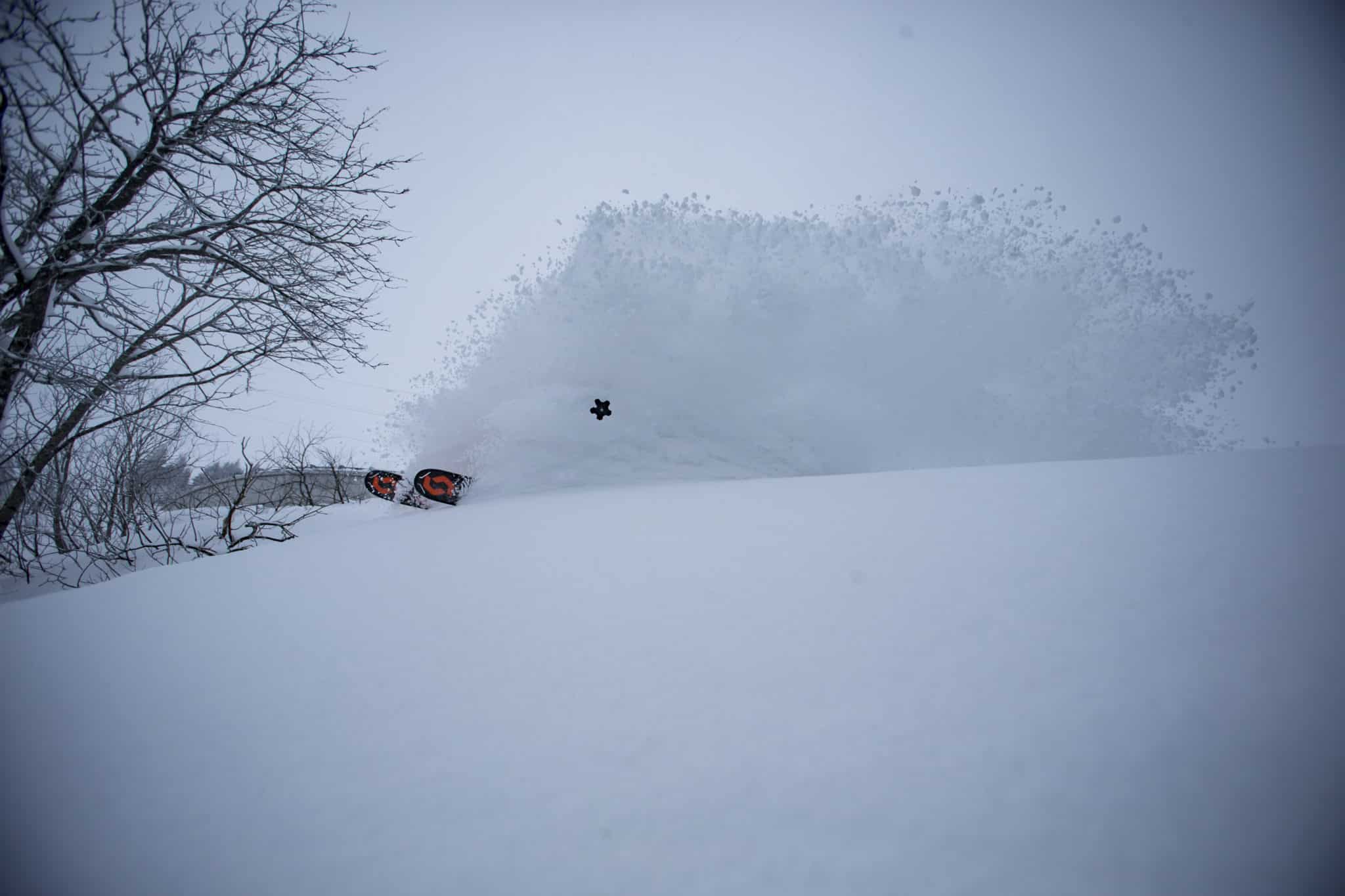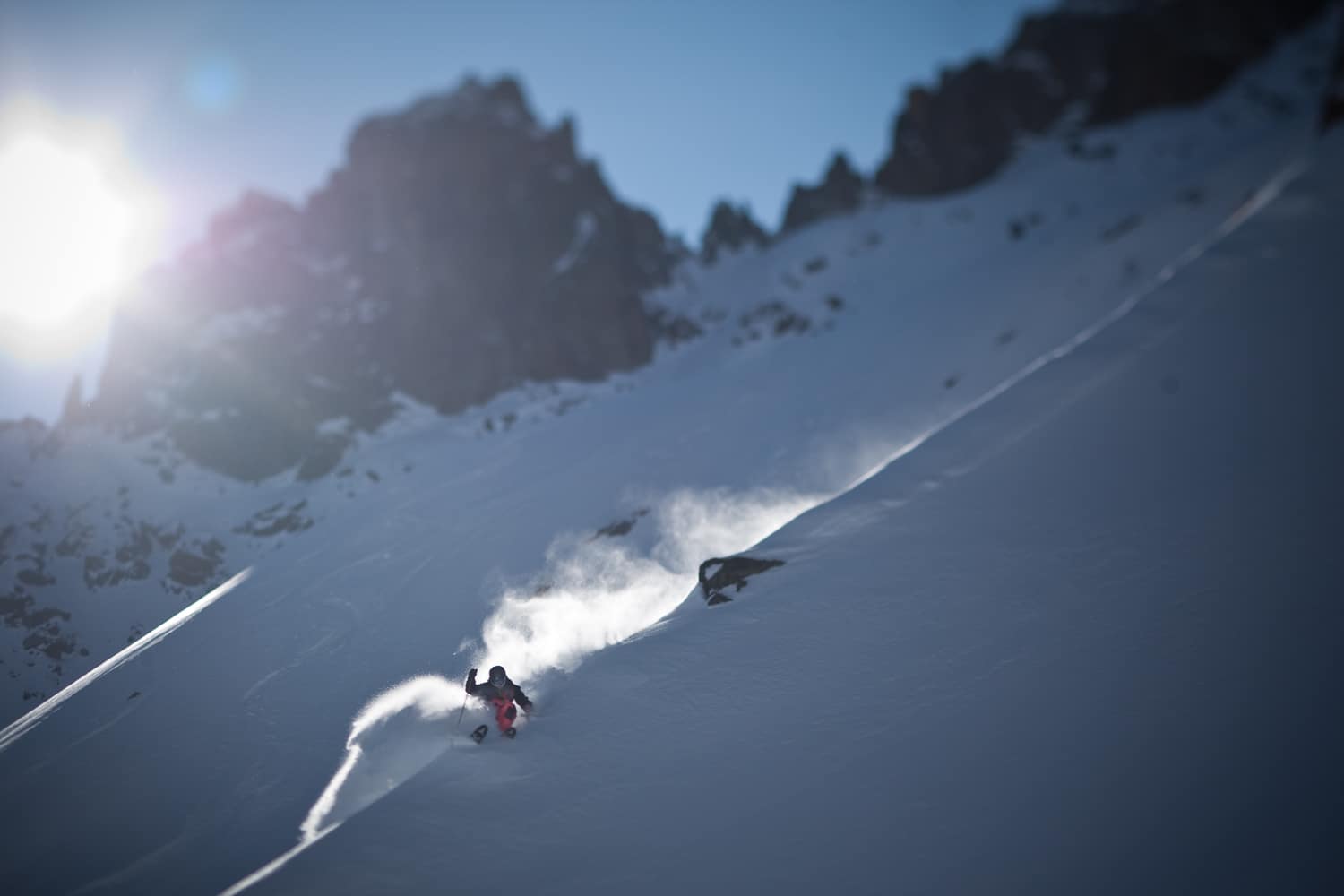Interview: Marc-Antoine Schaer, Founder & CEO of Alpride and avalanche airbag advocate

Mathieu Ros Medina is a passionate skier, snowboarder and mountain enthusiast with more than 15 years of experience as a journalist in these fields.
Born in La Chaux de Fonds, in the Canton of Neuchâtel, Switzerland, Marc-Antoine Schaer belongs to a generation that grew up on skis and snowboards. He came to mountaineering as a teenager and developed a passion for the Patrouille des Glaciers race, competing at a high level in eight editions. Also an adept of kitesurfing and paragliding and a Microtechnology Engineering graduate of EPFL, the Swiss Federal Institute of Technology in Lausanne, he was perfectly placed to combine the best of both worlds. And that is how this dynamo invented and marketed Alpride, one of the world’s best-selling avalanche airbag systems.

Mathieu Ros (MR): How did Alpride get its start?
M.-A. Schaer: In 2009, as an engineer specialized in clockmaking and medical devices, I was running my own industrial consulting firm. When I headed into the mountains, I took a Snowpulse, one of the very first airbags. They shared the market with ABS. I found it really heavy and uncomfortable. I’d always done a lot of water sports, and life jackets are very light and simple to use. I couldn’t understand why there was such a huge difference between that and an avalanche airbag. It was a bit naive, but that’s what made the lightbulb go off. Why not make an avalanche airbag with the same technology as life jackets? That’s how I got the idea to use life jacket cartridges in avalanche airbags. Alpride was born. Using sealed cartridges, my goal was to make an avalanche airbag that was lighter and less expensive than anything on the market.
Lighter didn’t take long. Less expensive took longer, but we’re there now, in 2023.
In 2012, the Canton of Neuchâtel awarded me the BCN Innovation Prize. That recognition gave us the shot in the arm we needed to start production. We brought our new airbag to market in 2013 under the Alpride brand and also released a model for Scott. Alpride 1.0 used two cartridges – one argon and one CO2. It shook up the market because we had focused on developing a truly lightweight airbag.

MR: You knew about mountain safety. Had you ever experienced or witnessed an avalanche?
MA: I’ve never been caught in an avalanche, but in 2005, I had a serious accident in the mountains. I fell into a crevasse. We were on the Oberaletsch Glacier, which is not particularly dangerous. I was third in the group. Less than 100 metres from a runout where we planned on roping up, I went through a snow bridge and fell 17 metres. Surprisingly, I was still alive when I hit the bottom of the crevasse. Luckily, I’d landed on my backpack and the snow bridge itself. I was conscious, so the rescue team could drop a rope to me and lift me out. Then they evacuated me by helicopter… I got off lightly. I had a broken eye socket that needed ten stitches. My nose was broken and displaced and that got sewn up, too. I had fractured my tailbone and was bruised from head to toe. I was very lucky. Because that March day was particularly warm, three people fell on the glacier. The two others die.
So when I started the Alpride project in 2009, that accident was at the back of my mind. It’s beautiful in the mountains. Majestic. But a dream day can turn into a nightmare in a split second.
MR: Could you explain the difference between the different avalanche airbag systems?
MA: The two main styles are mechanical cartridge-operated airbags and electric airbags. The first Alpride products – 1.0 and 2.0 – were mechanical. Then we released our electric models, the E1 and E2. Today, we’re the only company with both product lines.
Our electric airbags, which I patented in 2018, gave us a competitive edge. I certainly didn’t invent the airbag – not even the electric airbag – but I did integrate supercapacitor technology, which works particularly well.
Amer Sport and Arc’teryx were the first to patent electric airbag technology, almost at the same time as Black Diamond, who brought the first to market in 2015 but lagged behind when it came to patents. That first airbag had a big lithium-ion battery.
Our supercapacitors are very different from a battery. Batteries develop electricity through a chemical reaction. The problem with lithium ion batteries – everyone has experienced this with their mobile phones and electric vehicles – is that they lose capacity in the cold. That means that you have to use a significantly larger battery to have enough power when temperatures drop below zero.
Supercapacitors don’t need a chemical reaction to store energy, and they perform the same at +20 and -30°C. We can size them to operate perfectly at -30°C. That makes them the perfect power source for avalanche airbags, which have to operate quickly and with maximum power to inflate in under five seconds at any temperature.

MR: Does that make for big changes in the inflation system – in the fan?
MA: I’d already developed two cartridge-operated systems, so I had all the key specifications for an airbag. I wanted to create an electric avalanche airbag with the same inflation performance as a cartridge system. That’s why I immediately turned to turbocharger technology. It’s like what’s in cars, without the exhaust portion. And it’s nothing like a fan. It’s a radial compressor that increases air pressure for maximum power. We’re able to develop a lot of static pressure and volume in very little time. To inflate a 150-litre bag – the minimum size – an airbag system needs to push a massive 50 litres per second. It’s challenging technology, with peaks of 70,000 revolutions per minute. With this design, we can produce high pressure at the start to ensure the airbag deploys under all conditions. Then we reduce the pressure because we need less at the end of the inflation.
MR: How is that different from your competitors?
MA: The Ortovox and Arc’teryx models work with supercapacitors using my patents, although they had to recall them all this winter. A few years ago, we had great success with the Alpride E1. Even if it’s totally different from what Arc’teryx is doing, Amer Sport [Editor’s note: Arc’teryx’s parent company, which has partnered with Ortovox on avalanche airbags] had filed an extremely broad patent on electric airbags. So they came to talk. To avoid a patent battle, we agreed that they could use my supercapacitor patents and I could use their electric airbag patents.
With all of the brands using the Alpride system, we have a very large market share, and anyway we couldn’t supply everybody. But the problems that led to the Litric recall [Editor’s note: Arc’teryx’s avalanche backpack] are a reminder of how very challenging it is to make technically reliable products. We released the E1, then the E2. So we’ve already been making
electric airbags for five years and conventional ones for ten. It also helps that we don’t do anything else. We’re entirely focused on this highly technical product.

MR: How did you come up with the revolutionary idea to use supercapacitors in electric airbags?
MA: My first thought was to power a turbocharger mechanically with a mainspring – the kind used in clockmaking. But it didn’t work. We weren’t able to fully inflate the airbag. Since I’d already developed the turbocharger, I thought it would be a shame to give up. So I added a motor. In testing, it worked really well with a motor and battery. Then I put it in the freezer. Nothing. So I shelved the project for a year or two until I came across a scientific article about supercapacitors. I knew right then I’d found the solution.
I started with a standard 12-volt module, a big contraption with six supercapacitors. I got my prototype out of storage and hooked it up. I put the whole thing in a -30°C freezer for 24 hours. When I took it out for testing, it inflated extraordinarily well. A temperature of -30°C is hard on both cartridges and batteries. Even with cartridges, there’s a marked loss of performance. The pressure is lower. But I immediately knew that supercapacitors were the technology of the future, so I filed patents and started developing the E1.
MR: You get more than one shot with electric airbags. You can practice using them. Wasn’t that a gamechanger?
MA: The irony of cartridge-operated airbags is that people don’t use them. They’re afraid to pull the trigger. But you don’t know your equipment if you don’t use it. And since it’s unfamiliar, you don’t want to touch it. You wonder if it will work.
It’s exactly the opposite with electric airbags. Since you can play with them, you inflate them. You unfold them and refold them. So you don’t just know how to use it. You know it works. The more you use a product, the more confidence you’ll have in it. So you end up trusting an electric airbag much more than a cartridge airbag.
Technically, there’s no difference in reliability. A cartridge airbag is extremely robust. The technology is very simple. The only problems come from forgetting to arm the spring and loading empty cartridges. These are very basic things that happen a lot. But with a little care, these are highly reliable and robust systems.
They are perceived very differently, though, and for consumers, that’s huge.
The other difference is that electric airbags can be taken on an airplane. That’s less of an issue in Europe, but in the US, nearly 100% of all airbags sold are electric.
Today, the only advantage cartridge airbags have is on price. And it’s not insignificant. They’re a great choice for someone who doesn’t need to fly, who will pay 30 to 40 percent less for a product with the same weight and reliability.

MR: You often talk about weight. How much weight savings has been achieved? How much more can be saved?
MA: When I started Alpride, I immediately worked to build a lightweight cartridge airbag. The first ones weighed under 1,300 grams, and the new ones are down to 1,140 grams. The E1
weighed 1,280 grams, and with the E2, we shaved off 150 grams. We’re approaching one kilogram, but at this point, we’re at the limits of what’s possible.
There are some light backpacks that weigh just under 2 kilograms with the airbag system. Most standard packs are between 2.2 and 2.4 kilograms. But the way I see it, people who are spending money on an airbag backpack are not looking for ultralight. They want something solid.
With the E2, I had my vision, and I set my foot down. Every brand that integrates the E2 system into their bag must use a standard webbing frame to absorb the forces at play between the bag and the rider. Standard EN7-76 requires the connection between a backpack and its airbag to withstand a force of 300 kilograms. We had cases of pro riders who managed to tear the chest strap off our backpacks when landing a double backflip. I immediately increased load testing to 500 kilograms, which increases safety and better simulates the dynamic forces.
That has a cost, and it’s a bit heavier, but I refuse to compromise user safety to save 100 or 200 grams. Everyone wants low weight, but remember that going ultralight has an impact on overall strength. I defy you to find an ultralight backpack that passes a 500-kilogram pull test.
MR: What about training? You spoke about the issues users can have when they are not familiar with their airbag.
The feeling of invincibility you often hear associated with airbags doesn’t last long. You get used to equipment very quickly. It’s a bit like ski or bike helmets. After a while, you start telling yourself, “I’ll go faster because I have a helmet.”
It was a similar discussion when avalanche transceivers first came out. In the first weeks after buying an airbag, people might think, “If something happens, I have my airbag.” But that goes away by the second season.
An airbag is like a beacon. You have to know how to use it. Even if it’s easier and requires less practice, you need to know the basics. Check over your equipment. Is the spring armed? Is the cartridge full? It all seems obvious, but in hang gliding, forgetting to clip in your harness before launch is one of the main causes of accidents. That seems completely absurd, but it’s the same for electric airbags. You have to remember to turn it on. We have bags that stay charged for weeks or even months. So, if you’re heading into the mountains for a week, I recommend you turn it on when you get there and leave it on all week. There’s no need to turn it on and off every day. This equipment has made things very easy – much easier than searching for someone with a beacon. But you have to get into the habit. When you ride, you have to be able to grab the trigger, and the basics are often overlooked, like not using wrist straps. The main reason why people don’t pull the trigger is that they get their poles caught up in the flow of snow, and that keeps them from moving their hand. So when you’re skiing with an airbag, wrist straps off! And with a modern airbag, the rule of thumb is when in doubt, pull the trigger. Don’t wait. Don’t hesitate.

